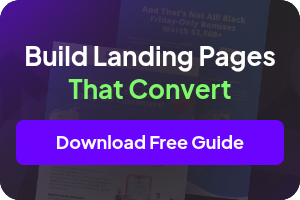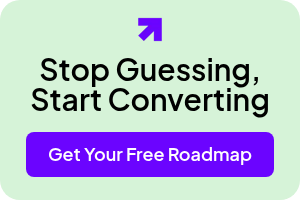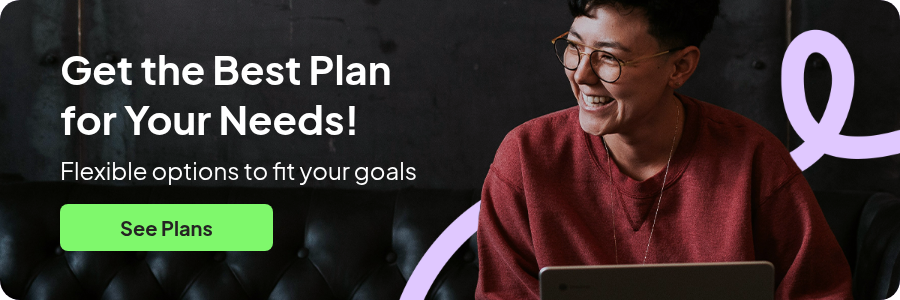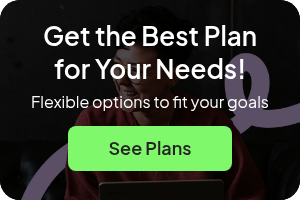As we approach 2025, the landscape of branding is set to evolve dramatically. It’s not just about logos and color schemes anymore; it’s about how brands communicate and connect with their audience through compelling narratives and a unique voice. Here’s how brand storytelling and voice will shape the future of branding:

landing pages
Landing Pages vs. Sales Pages: Key Differences & How to Use Them for Better Conversions
Not all web pages are created equal—especially when it comes to turning visitors into customers. If you’ve ever wondered whether you need a landing page or a sales page (or both), this guide breaks it down. We’ll walk you through their unique purposes, key differences, and how to use them strategically to get more leads and sales.
Reading
Demystifying Page Types
In the world of digital marketing, understanding the different types of pages and their unique roles is crucial. Think of your website as a series of specialized tools, each designed to serve a specific purpose. Each page has its own job to do, and knowing when and how to use each one can make all the difference in your business’s success.
⭐ Landing Page: Your Digital Welcome Mat (That Actually Gets Results!)
Imagine you’re throwing a party. You wouldn’t just open your front door and hope people find their way to the snacks, right? You’d probably put up a big sign with an arrow, maybe even have someone standing at the door saying, “Hey, the party’s this way!”
That’s essentially what a landing page is. It’s a specific, focused web page designed to welcome visitors who are coming from a particular source – like an ad, an email, or a social media post – and guide them towards a single action.

Why is it called a "landing page"?
Think of it like an airplane “landing” on a runway. Your visitors are “landing” on this specific page after clicking a link. It’s their first stop, their initial point of contact with your offer.
How is it used and why do we use it?
- To cut through the noise: In today’s digital world, people are bombarded with information. A landing page cuts through the clutter by focusing on one specific message and one specific action.
- To get better results from your marketing: Instead of sending people to your general website (where they might get lost or distracted), you send them to a landing page that’s tailored to the specific campaign they clicked on. This increases the chances of them taking the desired action.
- To build your email list: Offering a free ebook, guide, or webinar in exchange for an email address? A landing page is perfect for this.
- To promote a specific product or service: Highlighting the benefits and features of a particular offering.
- To generate leads: Getting people to sign up for a demo, request a quote, or contact your sales team.
- To sell something directly: For example, a limited-time offer or a special promotion.
Example:
Let’s say you’re running a Facebook ad for a free 7-day yoga challenge. Instead of sending people to your general website, you send them to a landing page that’s specifically designed for the yoga challenge.
The landing page would have:
- A headline that says “Join Our Free 7-Day Yoga Challenge!”
- A short description of the challenge and its benefits.
- A simple form to enter their name and email address.
- A button that says “Sign Me Up!”
📌 Anatomy of a Landing Page:
- Headline: Grabs attention and makes the offer clear.
- Subheadline: Provides a little more detail about the offer.
- Body: This is where you can add more information, highlight benefits, and explain why they should take action.
- Call-to-Action (CTA): A strong, clear button or form that tells visitors what to do next.
- Visuals: Supporting images, videos, or graphics that reinforce the message.
- Trust Signals: Testimonials, security badges, or other elements that add credibility.
⭐Sales Page: Your Online Story Teller: A Deep Dive Into Why They Need Your Product.
Imagine you’re at a friend’s house, and they’re showing you an amazing new gadget. Instead of just saying, “It’s cool, buy it,” they explain its features, how it makes life easier, and share why others love it. That’s a sales page
Think of it like this:
- Your Personal Show-and-Tell: A sales page is your chance to really show off your product or service. You’re not just telling people about it; you’re demonstrating its value.
- Answering “Why?” Before They Ask: It’s like having a conversation where you anticipate all their questions and address their concerns. You’re giving them all the information they need to feel confident about buying.
- Building Desire, Not Just Interest: A landing page gets them interested; a sales page makes them want it. You’re creating a compelling narrative that makes them see how your product will improve their lives.
Example:
Let’s say you’re selling a premium online course that teaches people how to become freelance writers. You wouldn’t just say, ‘Buy my course!’ You’d create a sales page that tells a story.
- The Problem and the Solution: “Are you tired of your 9-to-5 job? Do you dream of working from anywhere? This course will show you how.”
- The Benefits and Features: “Learn how to find high-paying clients, master the art of persuasive writing, and build a profitable freelance career.”
- The Social Proof: “Hear from students who have transformed their lives with this course.” (Testimonials, case studies)
- The Value and the Price: “For a limited time, get access to all the modules, bonuses, and support for [price].”
- Addressing Objections: “You might be thinking, ‘I don’t have time.’ But this course is designed for busy people like you.”
- Visual Examples: videos of students’ success, or walkthroughs of the course content.
📌 Anatomy of a Sales Page:
- Compelling Headline: Instantly grabs attention and highlights the key benefit.
- Engaging Story or Hook: Connects emotionally with the reader.
- Benefits and Features: Shows how the product/service solves their problem.
- Body: This is where you go in-depth—explain the value, add persuasive copy, and highlight details.
- Social Proof: Testimonials, reviews, case studies, or success stories.
- Call-to-Action (CTA): Clear instructions on what to do next (e.g., “Enroll Now,” “Buy Today”).
- Objection Handling: Answers potential concerns (e.g., money-back guarantee, FAQs).
Key Differences from a Landing Page:
- Length: Sales pages are typically longer than landing pages because they contain more detailed information.
- Purpose: Landing pages aim to capture leads or drive a single action, while sales pages focus on closing the sale.
- Content: Sales pages include more in-depth content, such as testimonials, case studies, and detailed product descriptions.
⭐Product Page: "The Detailed Showcase: Everything They Need to Know Before Buying."
Think of a product page as your product’s own personal spotlight—it’s where you show off everything that makes it awesome! Unlike a landing page, which is all about getting someone to take action fast, the product page is designed to give potential buyers all the juicy details they need to feel confident about making a purchase. Whether it’s size, color, features, or specs, your product page is there to educate and inform, helping people understand exactly what they’re getting.
Think of it like this:
- Your Online Product Display: This is where you put your product front and center, showcasing it in all its glory.
- Answering “What?” and “How?” It’s like having a detailed product guide readily available, answering every potential question.
- Building Confidence Through Clarity: By being transparent and thorough, you’re building trust and encouraging confident purchases.
For Example, If you’re browsing an online shop for a new pair of headphones, the product page serves as your information hub. It should include:
- Visual Exploration: High-quality images from every angle, possibly even a 360-degree view, allow for a thorough visual inspection.
- Technical Specifications: Details about sound quality, battery life, and connectivity provide essential technical information.
- Feature Highlights: Special features like noise cancellation or water resistance are clearly outlined.
- Size and Color Options: Customers can easily select their preferred size and color.
- Customer Reviews and Ratings: Real-world feedback from other buyers builds trust and credibility.
- Pricing and Availability: Clear pricing and shipping information ensure a smooth purchasing process.
Clear Purchase Options: A prominent “Add to Cart” button simplifies the buying process.
Key Differences from a Landing Page and Sales Page:
- Focus: Product pages emphasize providing product information, sales pages emphasize persuasion, and landing pages emphasize a specific conversion action.
- Purpose: Product pages inform, sales pages convince, and landing pages convert.
- Content: Product pages prioritize detailed product information, sales pages prioritize persuasive copy, and landing pages prioritize a streamlined message.
By now, you’ve got a solid grasp on landing pages, sales pages, and product pages. But a great website isn’t just about individual pages—it’s about how they all work together to guide visitors, build trust, and drive action.
If you want to take things a step further and make sure your landing pages are built to convert—whether you’re working with a team or tackling it solo—we’ve got something for you. Grab our Free Landing Page Guide—packed with actionable tips to help you create pages that actually get results.
























